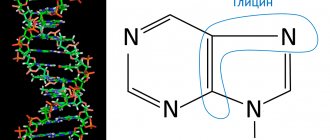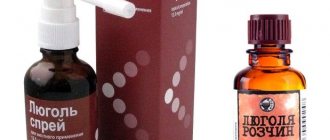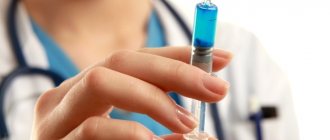When is Glycine indicated?
Glycine is a neurotransmitter. It is actively prescribed for excessive mental stress, deterioration of memory, attention, and decreased performance.
The medication can be used for preventive purposes to improve cognitive functions in people under the age of 60. The course of prophylaxis can last up to 1 month.
The drug is indicated for increased aggression, excitability, and psycho-emotional stress. The medicine relieves the symptoms of these conditions by normalizing inhibitory mechanisms in the brain.
The medication is prescribed for autonomic dysfunction, including the onset of menopause. The drug is actively used for the treatment of ischemic stroke. While taking the medication, brain activity is restored faster.
Other indications:
- head injuries (concussions, skull fractures);
- dementia developing due to alcohol and drug abuse; relieving symptoms of alcohol intoxication;
- consequences of brain hypoxia in children (due to oxygen starvation in the womb or during childbirth);
- behavioral disorders in children and adults;
- mental retardation in a child.
It is acceptable to use the medication as an adjuvant therapy for myocardial infarction and angina attacks. The drug should only be prescribed by a doctor after a complete examination.
Buccal method of administration
Medical sources indicate that buccal application means placing glycine behind the cheek, closer to the gum. In Latin, buccalis means “buccal” and trans means “through.” It is with this method of administration that the drug penetrates the blood faster and is better absorbed.
The tablet can be placed in the mouth and pressed with the tongue to the cheek or placed in the area between the lip and gum (it does not matter). You should not put the drug under the tongue - this is a completely different method of taking the medicine.
To speed up the absorption process, a glycine tablet can be ground into powder and poured into the oral cavity under the lower or upper lip. You cannot take the medicine with you.
To learn how to take glycine correctly, watch the video:
Amino acids. Glycine. Real effects. Sedation and blood pressure
Pharmacodynamics
Glycine normalizes inhibitory processes in the brain, which improves brain activity. It relieves intoxication well in cases of alcohol poisoning and drugs that negatively affect the functioning of the nervous system.
Functions of the drug:
- Nervousness, irritability, aggression are relieved;
- mental abilities increase (attention, memory, thinking);
- the ability to fall asleep is improved;
- signs of brain hypoxia are eliminated.
Due to these effects, the drug is in demand in neurology, narcology, psychiatry, and pediatrics.
Possible consequences of increasing dosage
There are no known cases of glycine overdose. But they are possible. If you take too many tablets, adverse reactions will occur:
- allergy;
- feeling tired, lethargic, apathy;
- drowsiness;
- state of psychosis;
- headache;
- irritability, aggression.
If the medication is intolerant, schizoid disorders, epileptic seizures, and convulsions may develop. If an adult patient suffers from hypotension, his blood pressure will drop and a headache will appear.
Instructions for use of Glycine
The medicine can be used sublingually or buccally. The standard dosage is 100 mg, which is suitable for practically healthy children and adults to relieve psycho-emotional stress and improve memory. The tablet form of 100 mg is taken three times a day for 2-4 weeks.
How to properly use Glycine for excitability, sleep disturbances, and frequent mood swings:
- patients under 3 years of age - 50 mg once a day for 1-1.5 weeks;
- patients over 3 years of age - 100 mg twice or thrice a day, course therapy is up to 2 weeks.
The course of therapy can be repeated after a month.
Patients are often interested in how much Glycine can be taken per day for a child under 3 years of age. Daily dose - 100-150 mg, course dose - 2000-2600 mg.
If you have problems falling asleep, you can take 50 (before 3 years) -100 mg (after 3 years) 20 minutes before going to bed.
If there are signs of cerebral ischemia (stroke), it is necessary to take 1000 mg sublingually or buccally (with 5 ml of water) in the first 3-6 hours. Then for 1-5 days, 1000 mg/day. For the next month, it is recommended to drink 100 mg three times a day.
For alcoholism and drug abuse, the medication is prescribed in a dose of 100 mg twice or thrice a day for 2-3 weeks. If required, course therapy is repeated 4-6 times a year.
For adaptation disorder, it is recommended to take 100 mg three times a day. The course of therapy is 4 weeks.
Glycine Bio Pharmaplant
How many tablets can you take at once?
When studying the annotation for the tablets, you should understand that it is advisory in nature. In some situations, the dose of the drug may be increased or decreased. The reasons for changing the dosage are the following factors:
- Age. The medicine can be taken by elderly people and given to infants. This point must be taken into account when calculating the daily amount of the drug.
- Purpose of application. The dose of glycine also depends on the indications. If in case of sleep disturbances it is enough to eat one tablet at night, then to get rid of stress you will need to drink 2-3 tablets at once.
- Individual characteristics. If there are contraindications or intolerance to the active substance, the quantity of a single serving is reduced. Only a doctor can help adjust the dosage and achieve the maximum effect of treatment.
There are cases where adults drank 50–100 glycine tablets at a time without experiencing any deterioration in their health. Such a practice cannot be considered the norm. If for one person the increase in dosage passed without consequences, another may experience many side effects, ranging from headaches to impaired consciousness.
Is Glycine okay for children?
The medication is in demand for behavioral disorders in children and adolescents.
The medicine is indicated for autonomic dysfunction in children of middle and high school age. It relieves excitability, nervousness, anxiety and other signs of illness. The medicine is prescribed for increased stress at school. The drug is recommended for adolescents during exams.
The medication is actively used in pediatric practice. Glycine is used in children with consequences of cerebral hypoxia (after birth injuries and intrauterine lesions of the central nervous system), which are accompanied at an older age by a delay in speech development and hyperactivity syndrome. In case of severe disorders of the nervous system, it is possible to use Glycine as an auxiliary medicine.
Glycine helps children learn
The medicine is prescribed in courses. The drug is most often used in children from 3 years of age. But if necessary, the doctor can prescribe the drug to patients under 3 years of age.
Role in the body
Forming healthy muscle tissue and converting glucose into energy are important functions of glycine. This substance is also important for maintaining the health of the central nervous and digestive systems. And research results show that in tandem with antioxidants it protects against certain types of cancer.
Glycine is an important component for the construction of DNA and RNA strands, and they, in turn, act as a genetic building material, without which the proper functioning of the body is impossible. It is one of three amino acids that form creatine, which is essential for muscle growth and energy production during exercise.
This amino acid is also part of collagen, which is responsible for the normal condition of the skin, ligaments and tendons. By the way, almost a third of the collagen that provides the skin with plasticity and elasticity consists of glycine. It promotes calcium absorption, which prevents muscle degeneration. And also plays an important role in the production of hormones responsible for the functioning of the immune system.
Without glycine, the body would not be able to repair damaged tissue. Sagging skin, wounds that do not heal for a long time, the epidermis destroyed by UV rays, the body suffering from constant attacks of free radicals - all these are also possible consequences of the complete absence of aminoacetic acid in the body.
Glycine helps the body regulate sugar levels and the uptake of glucose into skeletal muscles for energy production. These abilities make the amino acid an important component for diabetics, those suffering from frequent hypoglycemia, people with anemia or chronic fatigue.
Aminoacetic acid ensures normal functioning of the digestive tract. Concentrated in the gallbladder, glycine promotes the production of an enzyme necessary for the digestion of dietary fats. Another benefit of glycine is the ability to regulate the acid-base balance in the digestive tract, as well as protect against the harmful effects of alcohol.
The amino acid regulates the production of brain neurotransmitters, which affect a person’s emotional state and brain functionality. It is worth remembering this substance for people suffering from insomnia or sleep rhythm disturbances.
Functions of glycine.
- For the nervous system, it acts as an inhibitory neurotransmitter that prevents epileptic seizures.
- Used in the treatment of manic depression and hyperactivity.
- Participates in many biochemical processes in the body.
- Promotes normal functioning of the prostate.
- It is part of glutathione, a coenzyme involved in many biochemical reactions.
- Has antioxidant properties.
- Helps the functioning of the central nervous system.
Suction
The human body functions in such a way that it will not accumulate more glycine than is needed. This feature determines the speed and intensity of absorption of the substance. The only time the body makes a mistake is when there are certain genetic diseases that affect the body's ability to detect a lack of a substance.
Is it possible to have glycine for diabetes?
In diabetes, encephalopathy may develop due to vascular damage. Patients develop dementia over time. To delay brain destruction and prevent hypoxic conditions, use the drug Glycine. It is drunk in a dosage of 0.1 g three times a day. During therapy, mental abilities improve. Glycine in a standard small dose does not affect glycemic levels. According to studies, changes in glycemia are observed only with a dosage of 5 g per day or more. Since the use of very high dosages of the amino acid is impractical, this possible effect of the drug is not taken into account during treatment.
Interaction with other substances
You must be extremely careful when taking glycine and clozapine (a drug for the treatment of schizophrenia) at the same time, since this drug stops working against the background of the amino acid. The combination of glycine and cysteine enhances the synthesis of glutathione and increases insulin sensitivity. It is important to know that aminoacetic acid enhances the absorption of aspirin, and in combination with calcium or iron improves their absorption. But for glycine itself, the presence of B-group vitamins in the body, which contribute to the processes of amino acid synthesis, is important.
Best materials of the month
- Coronaviruses: SARS-CoV-2 (COVID-19)
- Antibiotics for the prevention and treatment of COVID-19: how effective are they?
- The most common "office" diseases
- Does vodka kill coronavirus?
- How to stay alive on our roads?
Sources
- N.Yu. Frolova, A.V. Buryakina, T.I. Melnikova // Neuroprotectors in pediatric practice // Pharmaceutical market // 2016
- M. V. Putilina // Modern ideas about nootropic drugs // Journal “Attending Physician” // 2006
- O.V. Grigorova, L.V. Romasenko, A.Z. Faizulloev, T.I. Vazagaeva, L.N. Maksimova, Ya.R. Narcissov // Use of Glycine in the treatment of patients suffering from adaptation disorder // Practical medicine // 2012
- M.R. Chuiko, N.M. Efremova, V.I. Skvortsova // Efficacy and safety of the use of glycine and limontar in the complex therapy of dyscirculatory encephalopathy and encephalopathy in insulin-dependent diabetes mellitus // Journal of Neurology and Psychiatry // 2010.
The effect of the drug Glycine
Advantages and disadvantages of the method
Transbuccal reception has the following advantages:
- convenience and ease of use;
- rapid onset of therapeutic effect and entry into the bloodstream.
However, the buccal form of administration also has a number of disadvantages:
- not everyone likes the sweetish taste of the medicine;
- with frequent use, glycine causes irritation of the oral mucosa;
- Excessive salivation may cause you to swallow the whole tablet. To prevent this situation, you can lightly hold the pill with your tongue until it dissolves.
Attention! The rapid onset of the effect can lead to undesirable and dangerous symptoms - a sharp decrease in blood pressure, headache, nausea.



